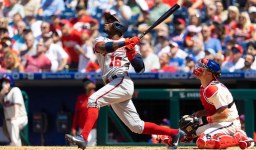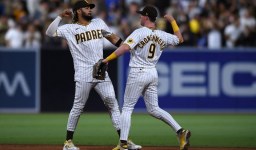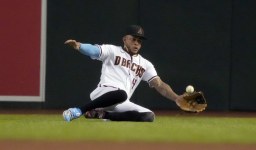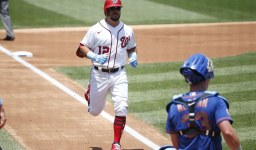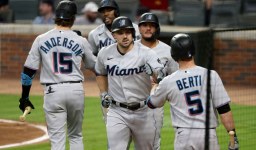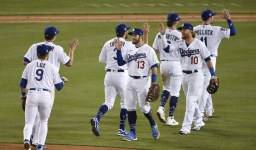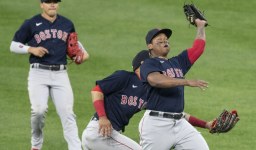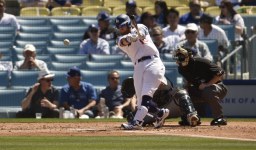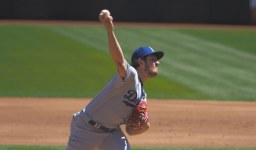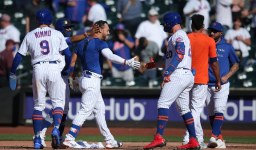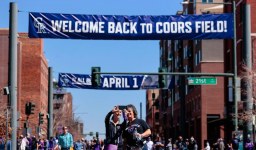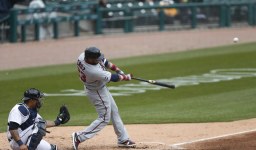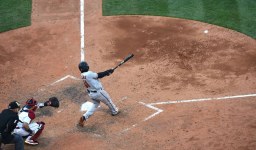
By Alex Butler
The names Babe Ruth, Ted Williams and Willie Mays often come up in debates about the greatest baseball player ever, but MLB’s recent recognition of Negro Leagues statistics vaults new possibilities into the discussion.
“For me, Josh Gibson is the greatest baseball player ever,” said Bob Kendrick, president of the Negro Leagues Baseball Museum. “I know that distinction normally goes to the center fielder. That’s why many recognize Willie Mays.
“But if there were such a thing as a five-tool catcher, Josh Gibson was it.”
On Dec. 16, MLB reclassified the Negro Leagues as a major league and said it will count statistics and official records from its thousands of Black players.
Unfortunately, many of the records from the 3,400 players who participated in the seven Negro Leagues from 1920 to 1948 were obscured by time. Some statistics contradict others or are incomplete, making it difficult to cite accurate accomplishments.
Filling the gaps
Historians and statistics now are busy filling in the gaps.
Jackie Robinson, Satchel Paige and Hank Aaron were among the Negro Leagues players to become well-known, but others never received recognition as forefathers of baseball.
Gibson displayed his five tools as a hitter for average and power, and shined as a fielder, thrower and runner, in the Negro Leagues throughout the 1930s and 1940s. He died less than three months before Robinson broke MLB’s color barrier in 1947.
Gibson played for the Homestead Grays, Pittsburgh Crawfords and Memphis Red Sox during his Negro Leagues career. He also played in the Dominican League, Mexican League, Venezuelan and Cuban League.
Negro Leagues database Seamheads.com, which MLB commended for its research and compilation of statistics and has used in its research, lists Donaldson with a .441 average during his 1943 season in the Negro Leagues.
That mark is better than Hugh Duffy’s record .439 average from the 1894 MLB season and would be a new major leagues record.
Fellow Negro Leagues star Artie Wilson — not Ted Williams — is the last player to hit at least .400 in a major league season. Williams hit .406 in 1941, but Wilson hit .402 in 1948, when he played for the Birmingham Black Barons and West All Stars.
Statistical databases, including the Society for American Baseball Research, credit Negro Leagues pitcher John Donaldson with more than 400 victories and 5,000 strikeouts.
Donaldson retired before Robinson broke the color barrier, but his statistics mirror the best pitchers in MLB history.
He pitched for the Kansas City Monarchs in the 1920s and 1930s. He also played for other semi-professional travel teams before the official formation of the Negro Leagues.
Negro Leagues star Martin Dihigo could play all nine positions and is the only player in baseball history to be enshrined into the Hall of Fame in five different countries, but you likely won’t hear his name mentioned among the all-time greats.
Dihigo played for the Grays, New York Cubans, Cuban Stars and Hilldale Giants in the Negro Leagues. He also played in Latin American leagues.
“Nobody even knows about the Negro Leagues,” said Kendrick, who has been president of the Negro Leagues Baseball Museum since 2011.
“They were probably more pioneers of the game than the guys who were recognized as pioneers of the game because of the adversity they had to go through to play.”
Kendrick said major media outlets at the time of the Negro Leagues only printed statistics for MLB, and most Negro Leagues statistics went unacknowledged. Those who wanted to track of Negro Leagues statistics had to seek out smaller newspapers that served Black communities.
Statistics filled major newspapers and popularized baseball in the decades after integration, leaving those who posted stellar Negro Leagues seasons without a spot in baseball lore because their prior statistics were not properly acknowledged due to racial bias.
Now that Negro Leagues statistics have re-emerged, Kendrick prefers recognition of the forgotten legends over comparisons between the Negro Leagues’ best and those who excelled during MLB’s early years.
Recognition over comparison
“People want to compare,” Kendrick said. “But there is no comparison because no major leaguer ever had to endure the kinds of hardships these players had to endure to play the game and what toll that could have taken.”
Negro Leagues players were paid a fraction of what MLB players received at the time, despite often drawing larger crowds as they played in the same stadiums as their counterparts.
Negro Leagues players earned $100 to $400 each month in the 1920, while MLB legend Ty Cobb was paid $20,000 that season.
Babe Ruth went on to make $80,000 in 1930 and 1931. Negro Leagues teams also rented stadiums from MLB teams, who took much of their profits from ticket and concession sales.
The stands often were filled with white fans, who would cheer for Gibson, Paige and other Black baseball stars one moment and then return to a racially segregated community after the brief acknowledgement of greatness.
“You could go into town, fill up the ballpark, and yet not be able to get a meal from the same fans that just cheered you,” Kendrick said. “Or not have a place to stay so you sleep on the bus and eat your peanut butter crackers until you get to a place that might offer you basic services.
“Somehow, these guys were able to rise above that and play at an exceptionally high level.”
